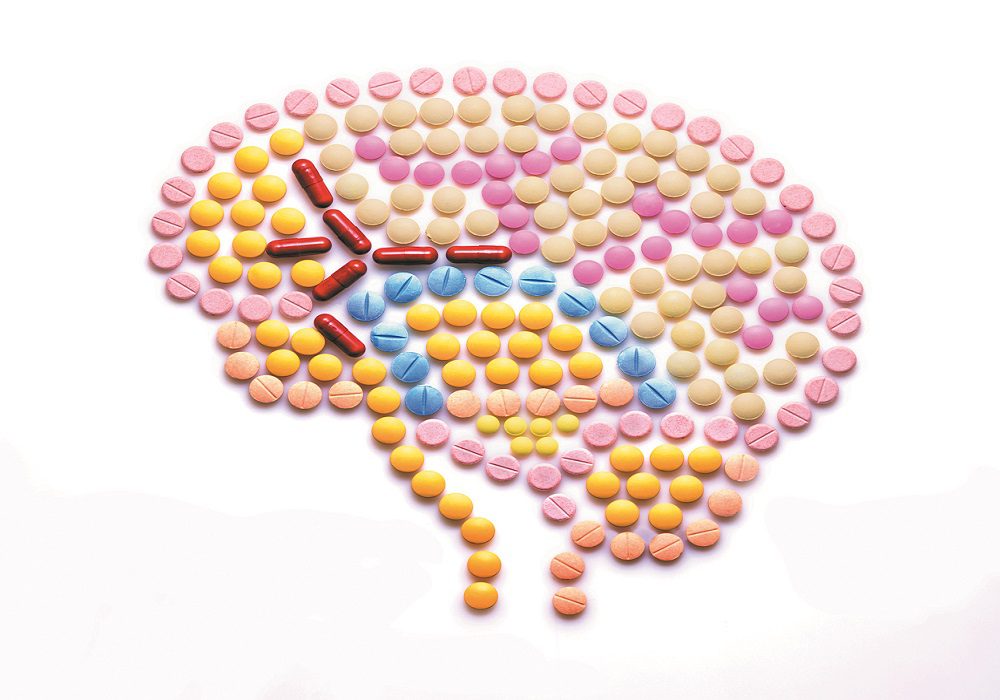During World War II, Henry Beecher, MD, a Harvard-trained anesthesiologist, ran out of morphine to use for anesthesia. He turned to a placebo and began injecting patients with saline instead. That simple salt water worked well enough for him to perform surgery on many of his patients. The reason? They believed it would.
The placebo effect is a phenomenon in which patients can take a nonmedical substance, whether it’s a saline injection or a sugar pill, and experience a positive response. In 1955, Dr. Beecher estimated that 35 percent of any treatment success was due to the placebo effect. Today, we know that the response rate ranges from 26 to 50 percent, and depends on several factors.
Type of placebo. In a review published in 2017 in the journal Annual Review of Clinical Psychology, it was shown that the more bells and whistles attached to a placebo, the higher the effect. For example, placebo acupuncture was more powerful for relieving pain than a placebo pill, and as powerful as actual acupuncture. In the review, placebo pills and injections had about a 26 percent placebo response, placebo acupuncture had a 38 percent response, and placebo surgery had a 50 percent response.
The condition being treated. Placebos work best in diseases with symptoms like pain, itching, or fatigue and less well on symptoms like high blood pressure, fever, or abnormal heart rate. A placebo may not stop a tumor from growing, but it can help reduce pain and the side effects of cancer treatment. Mental health disorders respond very well to placebos, especially anxiety, panic attacks, and depression. A possible explanation is that the anticipation of an effect boosts dopamine, which can decrease depression and anxiety.
A review of 215 studies that was published in the journal Pain found that up to 75 percent of any pain treatment is due to the placebo effect. Getting a placebo from a trusted health-care provider also makes any placebo more powerful.
How placebos work
The availability of brain imaging studies like MRIs and PET scans has given brain researchers a window into understanding how the placebo effect works. The current theory is that there are three important components: classic conditioning, expectations, and neurobiology.
Classic conditioning is the most basic component. It is a learned, automatic reaction gained from prior experience. If a lab animal is fed every time a bell rings, it will start to salivate at the ring of the bell, whether it receives food or not.
Brain imaging shows that brain neurons that recognize an injection of morphine will become wired to brain neurons that release pain-relieving brain messengers called neurotransmitters. Over time, triggering the injection neurons will automatically trigger the pain-relieving neurotransmitters, even if the injection is just salt water, because neurons that fire together wire together.
Expectation is a higher brain function that involves memories, emotions, and evaluations. Brain imaging shows that areas of the brain that are responsible for hope and belief are activated during a placebo response.
Neurobiology. The placebo response can generate the same neurotransmitters that are generated by real medications or treatments. They include the neurotransmitters serotonin, dopamine, and endorphins.
Placebos in research
The gold standard to determine the safety and effectiveness of a new treatment or medication is to use a randomized, placebo-controlled trial in which one group of volunteers is randomly assigned to a placebo group and the other is assigned to a real treatment group. Neither group knows if they are getting the treatment or the placebo. The placebo response is generated solely by the patient. Anything beyond that response is attributed to the new medication or treatment.
Growing power of placebos
New research, however, is complicated by the growing power of the placebo response. More patients in placebo groups are experiencing symptom relief than ever before, which makes the active treatments in the study appear to be less effective by comparison.
A study published in the journal Pain reported that, in 1996, clinical trial participants reported a 27 percent difference between the effectiveness of placebo and active drugs. In 2013, the difference was just 9 percent.
Interestingly, this association is seen only in the United States. There are two possible explanations: First, American drug trials tend to be larger, longer, and have more clinical staff interacting with study participants. Both factors—complexity and relationships with health-care providers—have been shown to increase the placebo effect. In addition, the United States is the only country that allows pharmaceutical companies to market their products directly to patients, so patients may be primed by advertising to expect greater benefits.
Harnessing placebo power
Now that we know how powerful the placebo is, why not start using placebos as actual treatments? The main reason is ethical. Outside of a clinical trial, doctors can’t give a placebo to a patient without telling them. The solution may be an open-label placebo.
Studies show that when patients are told they are getting a placebo and also told that placebos work, they still get a placebo response. In fact, open-label placebos have been used to treat cancer-related fatigue, migraine headaches, irritable bowel syndrome, chronic back pain, allergic rhinitis, and osteoarthritic knee pain with good success, according to the review published in Pain.
The bottom line is that the power of the placebo is within all of us. You don’t need to be fooled into using it; you can just start believing in it. There is a tremendous healing power available to you when you have hope, faith, a positive attitude, and a compassionate health-care provider.
The Greek Physician Hippocrates said, “The natural healing force within each one of us is the greatest force for getting well.” Modern researchers are discovering he was right.

